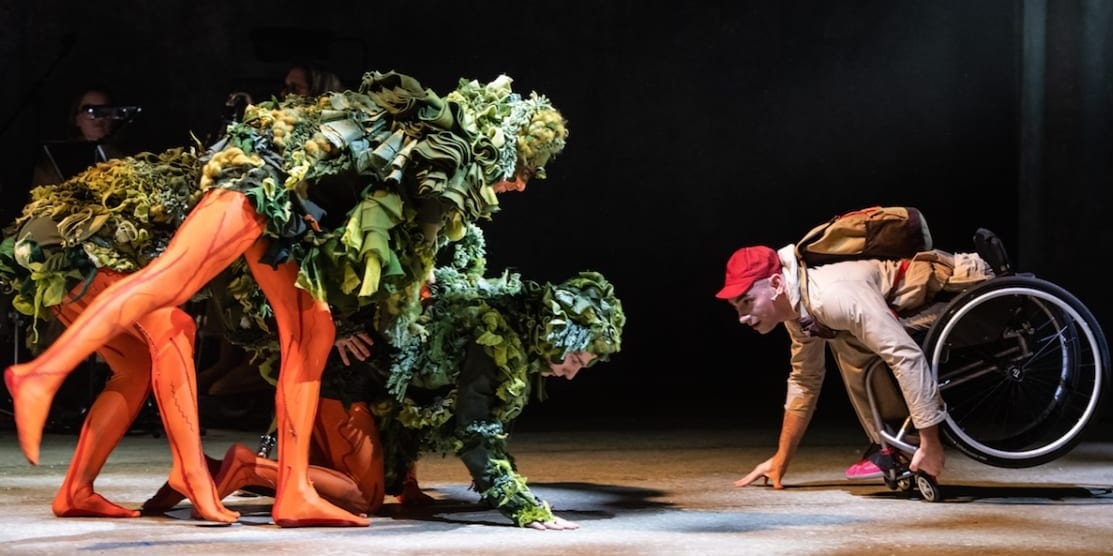Accessible and heart-felt, The Lost Thing is a beautiful adaptation of Shaun Tan’s picture book of the same title, by the disabled and non-disabled dancers of Candoco and musicians with the Royal Opera House.
A boy named Shaun, played by disabled dancer-singer Joel Brown who glides across the stage in a wheelchair, finds a creature that doesn’t seem to fit within his world. Taking it into his care, Shaun goes on an adventure that will awaken him to the myopia of modern society and connect him to an idyllic natural world beyond the industrial cityscape he has called home.
The Lost Thing comes with the delightful Pixar quality of defying categorization. It mixes opera, dance, theatre, and musical, and attracts and communicates meaningfully to audiences of all ages. It meditates on things that want for extra care in a society that might rather forget them, weaving together a message of protecting and celebrating things that seem out of place.
More uncategorizable than the performance is The Thing, a morphing abstract living thing played by four people, or three, or two, all moving together in costumes that are orange below the waist and tree or moss-like above. They move unlike anything I have a name for, creating beautiful, mysterious abstract designs that bristle with suffering, fear, hope, hesitation, compassion, and action.
The Thing coming into his life helps Shaun realize that maybe he is lost too. He starts to see that maybe The Thing has the answer—that in this dull, drab, industrial world (beautifully set, with a chameleon cube that serves as a moving backdrop and prop on stage, and with indelibly grey animation on a stage-wide screen in the back)—important things are falling through the cracks, being forgotten and left behind. The show extends Shaun Tan’s original message of noticing to be more explicitly ecological, by making The Thing distinctly a thing of nature. Its greens and oranges are more vivid than the city’s dull chartreuse and peach colors, and its environment is a beautiful hidden sylvian glade. Shaun’s determined search for its home comes as a genuine crusade, not only for a place for The Thing, but for a place where he can connect with what seems to be missing from modern life.
The complexity of movement and singing is balanced beautifully by the rich and simple text, replete with phrases like “It’s lost, I said. But they had already started talking about something else” and “some things are like that—just plain lost.” At its pace, The Lost Thing is a show that would be slow if the focus were on its words and plot. But one song near the beginning, a cathartic collection of sounds rather than words, suggests a key for viewing the show. Its visual transcription reads “the words mean nothing, but the song means everything.” It indicates, preciously—but with lasting emotional power—that the simple story’s meaning lies in the way it is performed: with operatic strength, enchanting contemporary dance, and the immense spirit and generosity that the disabled and non-disabled performers of Candoco and the Royal Opera House bring to the stage.

